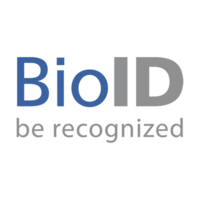Best Face Recognition Software
Best face recognition software includes True face attendance, facefirst, find face security, Intellivision, dermalog facial recognition, and Allgovision. Face matching software is a quick and efficient verification system.



No Cost Personal Advisor
List of 20 Best Face Recognition Software
Category Champions | 2024
Software by Amazon Web Services
Amazon Rekognition is a popular facial recognition solution. It makes the addition of image and video analysis to any application simple. Users can recognize objects, people, language, scenes, and activities in pictures and videos with Amazon Rekognition and also screen out any offensive material. Users can also find, examine, and compare faces using Amazon Rekognition's facial recognition APIs for a range of purposes. Read Amazon Rekognition Reviews
Explore various Amazon Rekognition features, compare the pricing plans, and unlock the potential of seamless operations by selecting the right software for your business.
Features
View all Amazon Rekognition Features- Image Recognition
- People Counting
- Computer Vision
- Facial Recognition Analytics
- Emotion Recognition
- OCR
- Session Replay
- Content Moderation
Amazon Rekognition Caters to
- StartUps
- SMBs
- Agencies
- Enterprises
Emergents | 2024
Software by Kairos AR, Inc
For developers and businesses, Kairos is an online face recognition software that provides a facial recognition API of the highest quality. This proprietary 2D-3D technology can do facial recognition in the most difficult situations using an image from any device. Users can create safer, more accessible consumer experiences by integrating Face Recognition with cloud API or hosting Kairos on their servers. Learn more about Kairos
Explore various Kairos features, compare the pricing plans, and unlock the potential of seamless operations by selecting the right software for your business.
Kairos Caters to
- StartUps
- SMBs
- Agencies
- Enterprises
Software by IBM
Using advanced technology, IBM Watson Visual Recognition is a trustworthy facial recognition software. It can be used to find faces in pictures, categorize them according to gender, age, and emotion, and even identify specific people. IBM Watson Visual Recognition is a potent technology with numerous uses. Learn more about IBM Watson
Explore various IBM Watson features, compare the pricing plans, and unlock the potential of seamless operations by selecting the right software for your business.
Features
View all IBM Watson Features- Appointment Management
- Alerts/Notifications
- Segmentation
- Campaign Management
- Feedback Management
- Dashboard
- Communication Management
- Process/Workflow Automation
Pricing
Free
$ 0
Per Month
Plus
$ 30
Per Month
Professional
$ 80
Per Month
IBM Watson Caters to
- StartUps
- SMBs
- Agencies
- Enterprises
Emergents | 2024
Software by Dermalog Identification Systems GmbH
Dermalog Face Recognition is a face comparison software. It can identify a face in an image and pinpoint where the eyes are located. It can function dependably even under a variety of lighting situations. Dermalog Face Recognition is renowned for its high verification rates and user-friendliness. This biometric facial identification system can be used for liveness detection, border and access control, monitoring systems, and criminal investigations. Learn more about Dermalog Face Recognition
Explore various Dermalog Face Recognition features, compare the pricing plans, and unlock the potential of seamless operations by selecting the right software for your business.
Dermalog Face Recognition Caters to
- StartUps
- SMBs
- Agencies
- Enterprises
Emergents | 2024
Software by Allgovision Technologies Private Limited
AllGoVision Face Recognition is facial recognition software that identifies and recognizes faces using AI deep learning algorithms. It can be used for VIP identification, Black list alarm, Forensic face search, Person authentication, Attendance reporting, Restricted zone security, and Lobby management. Video footage can be analyzed by AllGoVision Face Recognition in order to find human faces and match them with a database of previously registered faces. Learn more about AllGoVision Face Recognition
Explore various AllGoVision Face Recognition features, compare the pricing plans, and unlock the potential of seamless operations by selecting the right software for your business.
AllGoVision Face Recognition Caters to
- StartUps
- SMBs
- Agencies
- Enterprises
Emergents | 2024
Software by BioID GmbH
BioID is a biometric authentication and face-matching software. It employs facial recognition to confirm a user's physical presence. It can be used for multi-factor authentication for logins, remote work authentication, identity verification, remote onboarding, anti-spoofing, and e-signing. BioID is user-friendly and private. It can accurately discern between live faces in pictures, movies, masks, and other materials. Learn more about BioID
Explore various BioID features, compare the pricing plans, and unlock the potential of seamless operations by selecting the right software for your business.
BioID Caters to
- StartUps
- SMBs
- Agencies
- Enterprises
Software by Cognitech
Cognitech VideoActive is a popular face-detection software. Instantaneously comparing facial photos from multiple sources to substantial image databases is Cognitech VideoActive's forte. ID-issuing organizations can stop ID fraud or spot typing errors by comparing new ID photographs to existing ones. In order to compare, clean up, and preserve ID databases containing facial photographs, organizations can also execute database de-duplication. Learn more about Cognitech VideoActive
Explore various Cognitech VideoActive features, compare the pricing plans, and unlock the potential of seamless operations by selecting the right software for your business.
- Capture Digital Signature
- Network forensics and packet analysis
- Digital loyalty programs
- Forensic Analysis
- Digital Reports
- Digital Retouching
- Digital Wallet
- Digital Asset Management
Cognitech VideoActive Caters to
- StartUps
- SMBs
- Agencies
- Enterprises
Emergents | 2024
Software by Deep Vision AI Inc
Deep Vision AI is one of the best facial recognition software. It keeps track of distinctive people and delivers facial matches for particular people. This increases general safety and security, enables shops to identify key clients in real-time, and quantifies visitor frequency. The Deep Vision AI Admin-Console may be connected to any existing infrastructure and is not camera-specific. Learn more about Deep Vision AI
Explore various Deep Vision AI features, compare the pricing plans, and unlock the potential of seamless operations by selecting the right software for your business.
Features
View all Deep Vision AI Features- Machine Learning
- Automated & Real-Time Detection
- AI-Powered Detection
- For eCommerce
- Deep Learning
Deep Vision AI Caters to
- StartUps
- SMBs
- Agencies
- Enterprises
Emergents | 2024
Software by FaceFirst
FaceFirst is a facial recognition platform that blends human oversight and artificial intelligence to thwart threats to public safety, security, and fraud. Retailers, hospitals, casinos, airlines, stadiums, and arenas can all employ FaceFirst's face-matching technology. It helps public safety officials have a better understanding of the issue by making it easier to spot people who don't have an ID or are using a false one. Learn more about FaceFirst
Explore various FaceFirst features, compare the pricing plans, and unlock the potential of seamless operations by selecting the right software for your business.
FaceFirst Caters to
- StartUps
- SMBs
- Agencies
- Enterprises
Emergents | 2024
Software by Visage Technologies
Visage Face Recognition is one of the best face-tracking software. It employs facial recognition to validate identities and regulate online transactions. It can be used for identity verification, identification, and surveillance. This software is suitable for small and medium-sized businesses and startups. It can aid in work automation and offer a more individualized user experience. Learn more about Visage Face Recognition
Explore various Visage Face Recognition features, compare the pricing plans, and unlock the potential of seamless operations by selecting the right software for your business.
Visage Face Recognition Caters to
- StartUps
- SMBs
- Agencies
- Enterprises
Emergents | 2024
Software by Trueface
The fully functional facial recognition software Trueface Visionbox is perfect for startups and SMEs. It is a comprehensive online software that provides features like live face detection, quick face matching, a small face features template, and quick face processing. Trueface produces useful data from live video feeds with the aid of facial recognition technology. Learn more about Trueface Visionbox
Explore various Trueface Visionbox features, compare the pricing plans, and unlock the potential of seamless operations by selecting the right software for your business.
Trueface Visionbox Caters to
- StartUps
- SMBs
- Agencies
- Enterprises
Emergents | 2024
Software by IntelliVision
The online face recognition software from IntelliVision can be employed for access control, VIP welcome, the detection of shoplifters and unauthorized individuals. Without regard to race, it can recognize faces from a database of photos and detect faces of all ethnicities. This software is perfect for usage by OEMs and companies in the security and investigative sector. It aids in real-time face detection. Learn more about IntelliVision
Explore various IntelliVision features, compare the pricing plans, and unlock the potential of seamless operations by selecting the right software for your business.
IntelliVision Caters to
- StartUps
- SMBs
- Agencies
- Enterprises
Emergents | 2024
Software by Clarifai
Clarifai Organization is one of the best facial recognition software. It supports the entire AI development lifecycle, including model training, dataset preparation, and deployment. Clarifai Organization’s facial recognition technology makes it feasible to match human faces in pictures, videos, and movies. Users can get started by using Clarifai's pre-trained Face Detection and Demographics Models. Learn more about Clarifai Organization
Explore various Clarifai Organization features, compare the pricing plans, and unlock the potential of seamless operations by selecting the right software for your business.
- Search/Filter
- Asset Categorization
- Workflow Management
- Reporting/Analytics
- Asset Management
- Change Management
Pricing
COMMUNITY
$ 0
Per Month
ESSENTIAL
$ 30
Per Month
Clarifai Organization Caters to
- StartUps
- SMBs
- Agencies
- Enterprises
Emergents | 2024
Software by CyberExtruder
CyberExtruder is a widely used face verification software. It gives access to the most accurate facial recognition testing data. A few useful features CyberExtruder provides include live face detection, quick face matching, a small face features template, and quick face processing in one location. This platform is adaptable, expandable, and reasonably priced. It helps with the identification of potential suspects. Learn more about CyberExtruder
Explore various CyberExtruder features, compare the pricing plans, and unlock the potential of seamless operations by selecting the right software for your business.
CyberExtruder Caters to
- StartUps
- SMBs
- Agencies
- Enterprises
Emergents | 2024
Software by NtechLab
FindFace Security is a popular face-matching software that uses video to automate security and hospitality operations management. It can be used in a various industries, including retail, banking, social networking, entertainment, sports, event management, online dating, public safety, and homeland security. FindFace Security recognizes the faces of VIP visitors and unauthorized individuals in the video and alerts security and hospitality staff. Learn more about FindFace Security
Explore various FindFace Security features, compare the pricing plans, and unlock the potential of seamless operations by selecting the right software for your business.
FindFace Security Caters to
- StartUps
- SMBs
- Agencies
- Enterprises
Emergents | 2024
Software by Aware, Inc
Nexa|Face is a widely used facial recognition software that is used for extensive biometric identification and deduplication. When compared to huge databases of biometric and other identity data, it can do one-to-many searches or one-to-one matches. It can be used to find and locate people in real-time, on camera, or in movies. Learn more about Nexa|Face
Explore various Nexa|Face features, compare the pricing plans, and unlock the potential of seamless operations by selecting the right software for your business.
Nexa|Face Caters to
- StartUps
- SMBs
- Agencies
- Enterprises
Emergents | 2024
The World on Mobile
Axonator Facility Management is an online face detection software. Axonator makes use of facial recognition technology to authenticate and identify users. Axonator tracks staff attendance using facial recognition and voice detection. It generates IDs, tracks visits, and schedules meetings using facial recognition. It is also used in airports and schools to ensure no one is contagious or exhibiting signs of an infection. Learn more about Axonator Facility Management
Explore various Axonator Facility Management features, compare the pricing plans, and unlock the potential of seamless operations by selecting the right software for your business.
- Location-Based Mapping
- Supply Chain Management
- Live Chat
- Barcode Scanning
- Due date tracking
- Auditing
- HIPAA Compliance
- Applications Management
Pricing
USA, UK, Australia, & Canada
$ 40
User/Month
India
$ 10
User/Month
Rest of The World
$ 25
User/Month
Axonator Facility Management Caters to
- StartUps
- SMBs
- Agencies
- Enterprises
Face Recognition with 3D Liveness Detection
Facia is a facial recognition solution that identifies or verifies a person's identification using artificial intelligence and machine learning. The program examines aspects of the face, such as the distance between the eyes, the bridge of the nose, and the shape of the lips. It is able to recognize people in real-time, on camera, or in videos. Learn more about Facia.ai
Explore various Facia.ai features, compare the pricing plans, and unlock the potential of seamless operations by selecting the right software for your business.
Features
View all Facia.ai Features- Onboarding
- Biometric Recognition
- ID Scan
- Self Check-in / Check-Out
- Visitor Management
- Full API support
- Visitor Tracking
- Remote Access
Pricing
Unlimited Checks
$ 59988
One Time
Facia.ai Caters to
- StartUps
- SMBs
- Agencies
- Enterprises
Category Champions | 2024
New age end-to-end HR platform
Darwinbox HR is one of the best facial recognition software. It enables on-field and remote employees to be more productive by enabling facial recognition check-in and location tagging features. Darwinbox HR is simple to use and handy. It automates HR processes such as Recruitment, leaves, attendance, directory, Payroll, Employee movement, Employee engagement, Talent management, and People analytics. Read Darwinbox HR Reviews
Explore various Darwinbox HR features, compare the pricing plans, and unlock the potential of seamless operations by selecting the right software for your business.
Features
View all Darwinbox HR Features- Performance Management
- Employee Performance Analytics
- Analytics & Advance MIS Reports
- Applicant tracking
- Onboarding
- Workforce Management
- Asset Management
- Mobile Survey
Darwinbox HR Caters to
- StartUps
- SMBs
- Agencies
- Enterprises
Contenders | 2024
Software by Mantra Softech (India) Private Limited
Mantra Softech is a widely used facial recognition solution. It offers facial recognition software and biometric sensors powered by Artificial intelligence (AI). Face and body temperature detection, social welfare programs, KYC requirements, web apps, verification and identity, access control, and individual verification projects are all possible uses for Mantra Softech's facial recognition technology. Read Mantra Softech Reviews
Explore various Mantra Softech features, compare the pricing plans, and unlock the potential of seamless operations by selecting the right software for your business.
Mantra Softech Caters to
- StartUps
- SMBs
- Agencies
- Enterprises
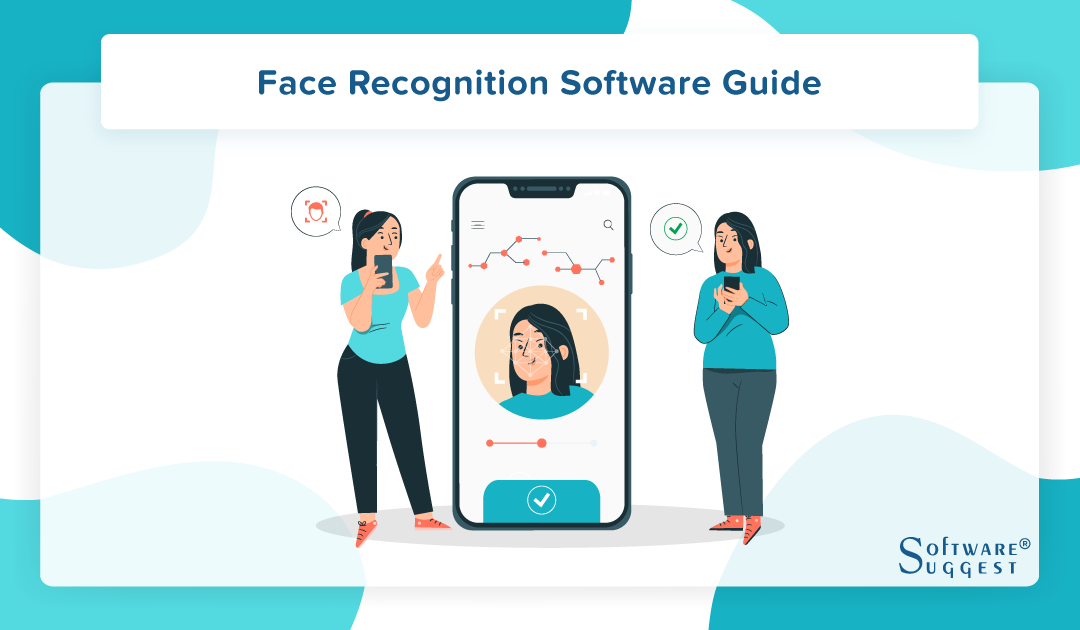
What Is Face Recognition Software?
Face recognition software is a type of biometric technology that analyzes and identifies the distinctive features of a person's face to confirm their identity.
It uses a combination of machine learning algorithms and facial recognition technologies to pinpoint a person's unique facial features, including the separation between their eyes, the shape of their nose, and the lines of their jawline. Once a match is found, this data is compared to a database of previously saved faces.
Personal device authentication, law enforcement, and security systems are just a few of the uses for the technology. Recent developments in artificial intelligence and deep learning algorithms have increased facial recognition software's accuracy and speed, increasing its popularity.
Key Components of Face Recognition Software
Face recognition software is a type of biometric technology that uses an individual's unique facial traits to assess and identify them to confirm their identification. The facial recognition software technology comprises several crucial elements that cooperate to produce precise and trustworthy identification. These essential elements consist of a database, hardware, and intellect.
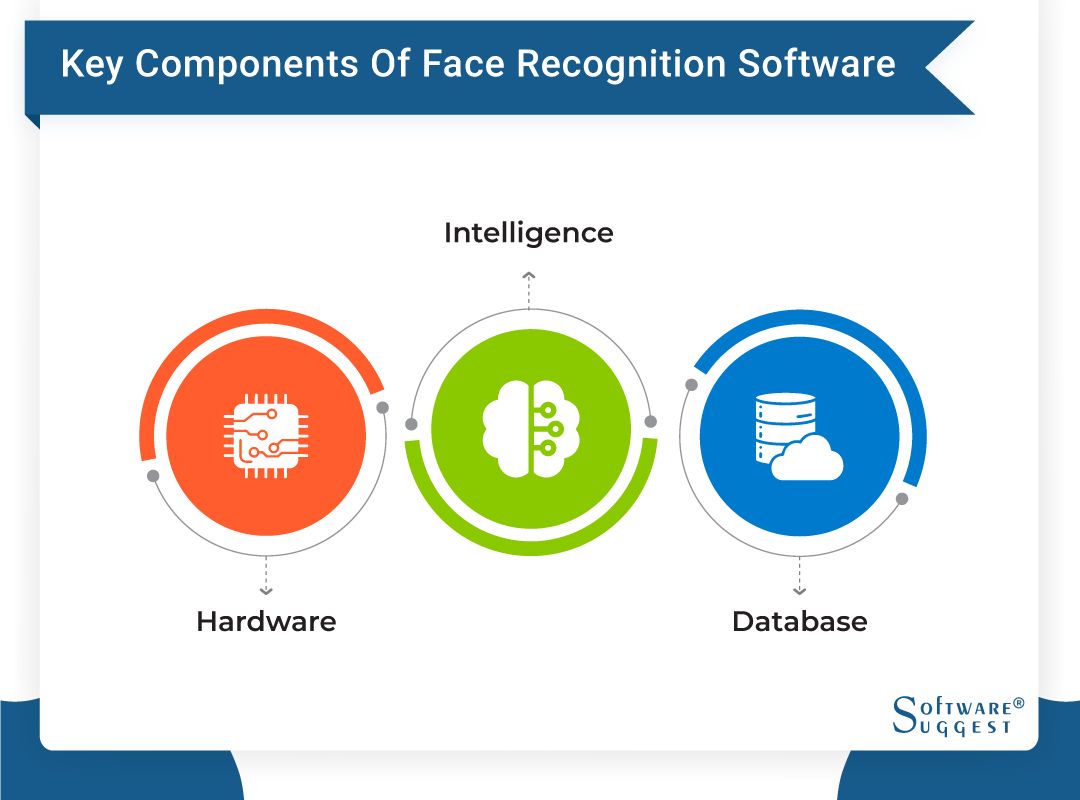
-
Hardware
The face recognition software's hardware component includes the physical tools for taking face photographs, including cameras or scanners. These gadgets take clear pictures of the face, which the software uses to recognize the particular traits of each person's face.
-
Intelligence
The intelligence part of face recognition software refers to the algorithms and machine learning models that evaluate the facial characteristics captured by the hardware. These models are trained on vast databases of images to learn how to recognize different facial characteristics, such as the shape of the eyes, nose, and mouth. The software uses this information to identify persons precisely.
-
Database
The facial photos and biometric information needed to identify people are stored in the database component of face recognition software. The database can compare fresh images to ones already saved to find a match. The database can be filled with pictures of well-known people or used to locate unknown people by comparing their pictures to those in a larger database.
How Does Face Recognition Software Work?
Innovative technology called facial recognition software uses computer algorithms to recognize people by their distinctive facial features. This technology has several uses, including smartphone unlocking, security, and surveillance. The five key phases that facial recognition software follows will be covered in this article.
-
Face Detection
In facial recognition software, detection is the first stage. Algorithms are used in this procedure to find faces in a video or image stream. The computer program scans the data and looks for facial features like the mouth, nose, and eyes. After recognizing a face, the software extracts the pertinent facial traits for the following phase.
-
Analyze Facial Features
The software's face feature detection is followed by analysis. This procedure entails calculating the shape of the jawline and the depth of the eye sockets and measuring the distances between various points on the face, including the eyes, mouth, and nose. A "faceprint" is a special set of data points produced by this analysis.
-
Compare Faceprint to Database
The third stage in facial recognition systems compares the faceprint to a database of recognized faceprints. This database might be built from earlier pictures of the same person or a bigger database of faces, like the ones used to confirm identity when applying for a passport or driver's license.
-
Make a Match
If a match is found, the face-matching software moves on to the fourth step: to make a match between the input faceprint and the database faceprint. This involves calculating a similarity score between the two sets of data points.
-
Identification
Finally, in the identification step, the software provides a result indicating whether or not a match was found. This could be used to unlock a device, grant access to a secure location, or alert authorities to the presence of a wanted individual.
What Are the Benefits of The Best Face Recognition Software?
Face recognition software, a cutting-edge technology, enables computers to recognize people by facial traits. Numerous real-world uses exist for this technology, such as in marketing, public safety, and security.
The advantages of facial recognition software and how it may be utilized to increase effectiveness and accuracy will be covered in this article.
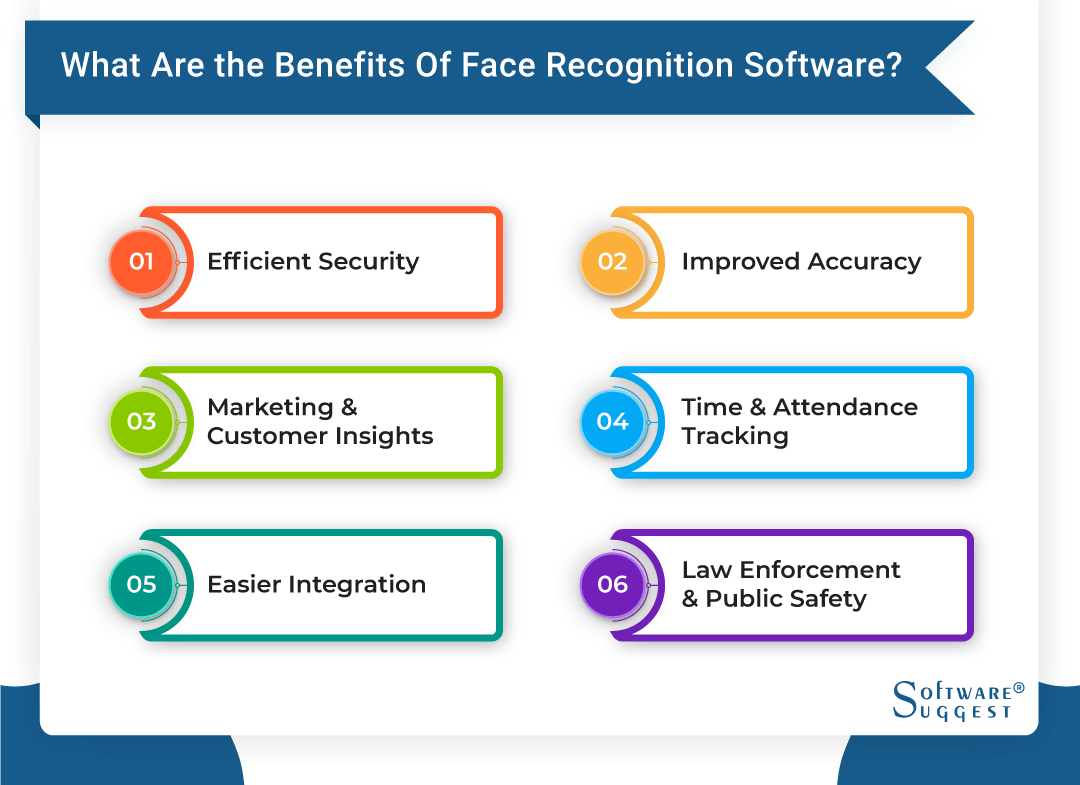
-
Efficient Security
The capacity of facial recognition software to improve security is one of its most important advantages. It can be used to identify people in high-security locations like banks, airports, and other places to more quickly and accurately identify potential threats. Facial recognition algorithms can also monitor people at events, enhancing security and safety measures.
-
Improved Accuracy
Facial recognition solutions offer a better level of accuracy when compared to more conventional identifying techniques, such as ID cards or passwords. The technology's sophisticated algorithms to analyze facial features produces fewer false positives and false negatives. Identity theft and other fraudulent actions can be avoided with face recognition solutions.
-
Marketing & Customer Insights
Face recognition technologies can enhance marketing initiatives by examining consumer demographics and behavior. This technology can monitor customer reactions to products, track customer traffic patterns, and compile information on customer preferences. The data can be utilized to enhance marketing plans and boost consumer involvement.
-
Time and Attendance Tracking
Facial recognition software can monitor employee attendance, delivering precise and trustworthy information on timekeeping and attendance. By using this technology, payroll processing errors can be decreased, and workplace productivity can be increased.
-
Easier Integration
Software for face recognition is an excellent solution for many sectors because it integrates easily into current systems. It can be smoothly connected with current infrastructure and added to smartphones, security cameras, and other devices.
-
Law Enforcement and Public Safety
The use of face search software technology could transform public safety and law enforcement. It can track potential threats, find suspects and missing people, and improve community safety. Also, the technology helps speed up emergency responses and lower crime rates.
Why Do You Need Facial Recognition Software?
Face recognition software is a biometric technology that uses artificial intelligence to analyze and identify facial features. It has become increasingly popular in recent years due to its wide range of applications. In this essay, we will discuss why face recognition software is needed in today's world.
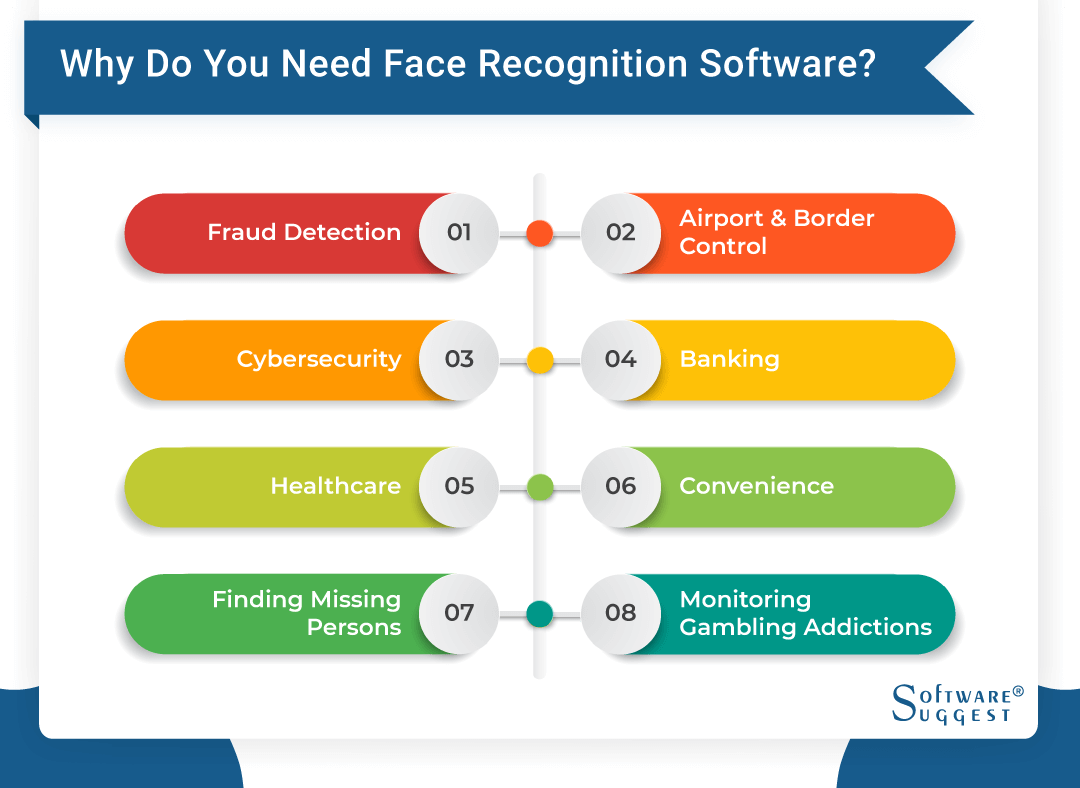
-
Fraud Detection
One of the key uses for facial recognition technology is fraud detection. By comparing face characteristics with databases of well-known criminals, the software can quickly identify potential fraud situations and alert the proper authorities. This technology is particularly useful in financial organizations since it can prevent identity theft and other types of fraud.
-
Airport and Border Control
Airport and border control are other crucial areas where face recognition software is used. The software instantly detects potential dangers by scanning travelers' faces, ensuring that only approved people can enter or depart a country. Due to the rise in international travel in recent years, this technology has grown significantly.
-
Cybersecurity
Face finder software can also be used in cybersecurity to prevent unauthorized access to sensitive information. By analyzing facial features, the software can determine whether a person is authorized to access a particular system or data. This technology is particularly useful in organizations that deal with sensitive information, such as government agencies and financial institutions.
-
Banking
Face recognition software is also useful in the banking industry. By using facial recognition technology, banks can verify the identity of customers quickly and easily, which can help prevent fraud and improve the customer experience. Additionally, this technology can monitor ATM usage and prevent card skimming..
-
Healthcare
In the healthcare industry, face recognition software can verify patients' identities and prevent medical identity theft. This technology can also monitor hospital patients and ensure they receive the correct treatments.
-
Convenience
Face recognition software is also useful for everyday tasks such as unlocking smartphones and other devices. By analyzing facial features, the software can quickly and easily verify the user's identity, saving time and improving the user experience.
-
Finding Missing Persons
Face detection software can also locate missing persons. By analyzing facial features, the facial detection software can compare them to a database of known missing persons, which can help locate them quickly and easily.
-
Monitoring Gambling Addictions
Face comparison software can also be used in casinos and other gambling establishments to monitor customers for signs of addiction. By analyzing facial expressions, the software can detect signs of distress and alert the relevant authorities. This technology can help prevent problem gambling and improve gambling establishments' overall safety and security.
Must-Have Features of The Best Face Recognition Software
Face recognition software is a technology that uses artificial intelligence and machine learning to identify and authenticate individuals based on their facial features. As this technology is becoming increasingly popular, it is important to understand the key features that make face recognition software effective and efficient.
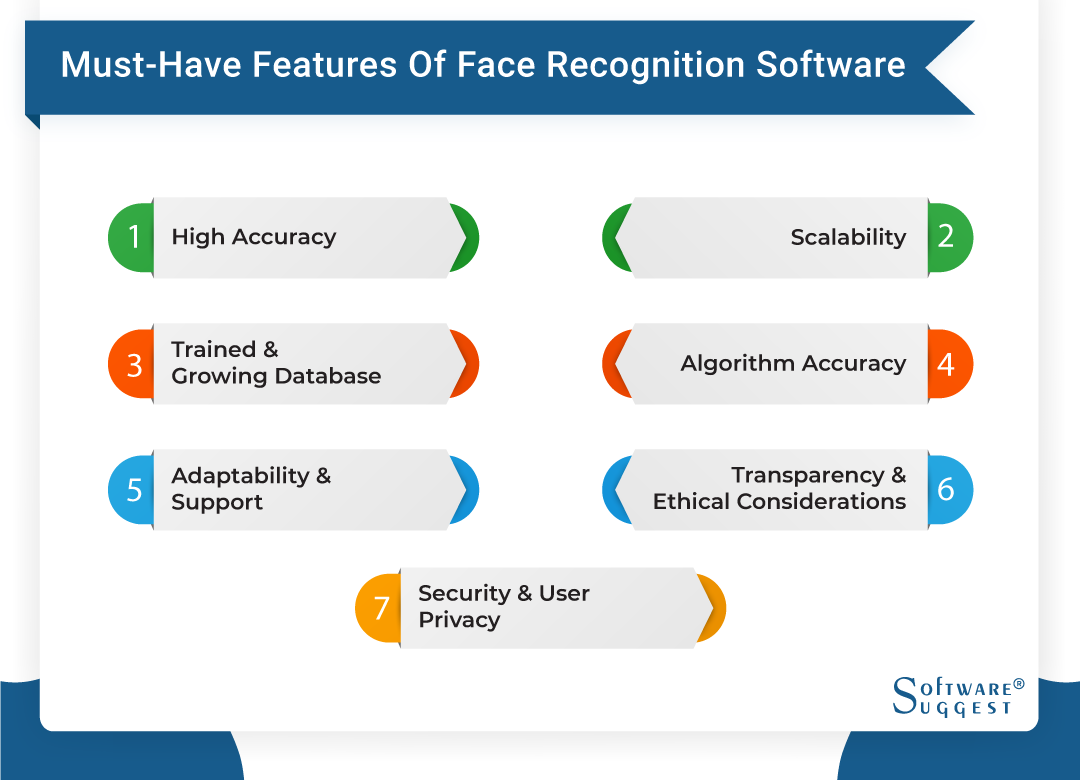
-
High Accuracy
One of the most critical features of face detection software is its accuracy. It should be able to identify individuals with high precision, even under different lighting conditions, angles, and facial expressions.
-
Scalability
Face recognition software should handle large volumes of data and users without compromising accuracy and performance. It should be scalable enough to handle thousands or millions of faces in its database.
-
Trained and Growing Database
The accuracy of face recognition software largely depends on the quality and quantity of data used to train it. Therefore, it is important that the software has a large and diverse database of facial images and that it continues to grow and adapt to new faces.
-
Algorithm Accuracy
The algorithm used by the face recognition software should be accurate, efficient, and fast. It should be able to process and analyze facial features in real-time without causing any delay or lag.
-
Adaptability and Support
Good face recognition software should be adaptable to different platforms, environments, and technologies. It should also provide excellent customer support and technical assistance to users.
-
Transparency and Ethical Considerations
Face recognition software should operate transparently and ethically, with clear guidelines and policies for data privacy and usage. The software should also adhere to international standards for the ethical use of facial recognition technology.
-
Security and User Privacy
Face recognition software should provide robust security features to prevent unauthorized access and misuse of data. It should also protect users' privacy and personal information while providing them with control over their data.
-
Flexibility
Lastly, good face recognition software should be flexible and customizable, with features tailored to different users' and organizations' specific needs and requirements. It should also be easy to integrate with other systems and technologies.
How to Choose the Best Face Recognition Software?
As face recognition software continues gaining popularity, choosing the right software that best fits your business needs is important.
There are several factors to consider when selecting the best face recognition solution, such as accuracy, performance, security, privacy, and cost. In this response, we will describe each point of "How to choose the Best Face Recognition Software?" in detail
-
Know Your Business Needs
Before selecting face recognition software, it is important to know your business needs. Determine your business requirements, what kind of data you want to collect, and how you plan to use the data. This will help you identify the key features you need in face recognition software.
-
Evaluate Other Software
Research and evaluate different facial recognition software available in the market. Consider their features, functionalities, and limitations. Evaluate their compatibility with your business needs and suitability for your use cases.
-
Evaluate Accuracy and Performance
Accuracy and performance are critical factors when choosing the best face recognition software. Look for software with high accuracy rates, even under different lighting conditions, angles, and facial expressions. The software should also be able to process facial recognition in real-time without delay or lag.
-
Security and Privacy
Security and privacy are paramount when it comes to face recognition software. Ensure that your chosen software adheres to industry data security and privacy standards. It should have robust security features that prevent unauthorized access and misuse of data.
-
Support & Cost
Lastly, consider the support and cost of the software. Look for software that offers good customer support and technical assistance. Ensure that the cost of the software is within your budget and offers value for money. Evaluate the software's licensing options and pricing plans to determine the best fit for your business needs.
Top 5 Facial Recognition Software Comparison
|
Name
|
Free Trial
|
Demo
|
Starting Price
|
|---|---|---|---|
Amazon Rekognition |
7 Days |
Yes |
$0.001 to $0.10 per image |
Betaface |
Varies |
Yes | Custom quotation |
Cognitec |
30 Days |
Yes |
Custom quotation |
Face++ |
30 Days |
Yes |
$1000/month |
BioID |
14 Days |
Yes |
On request |
Wondering which facial recognition software companies to choose? We have curated a list of the 5 best face-detection software to choose from.
1. Amazon Rekognition
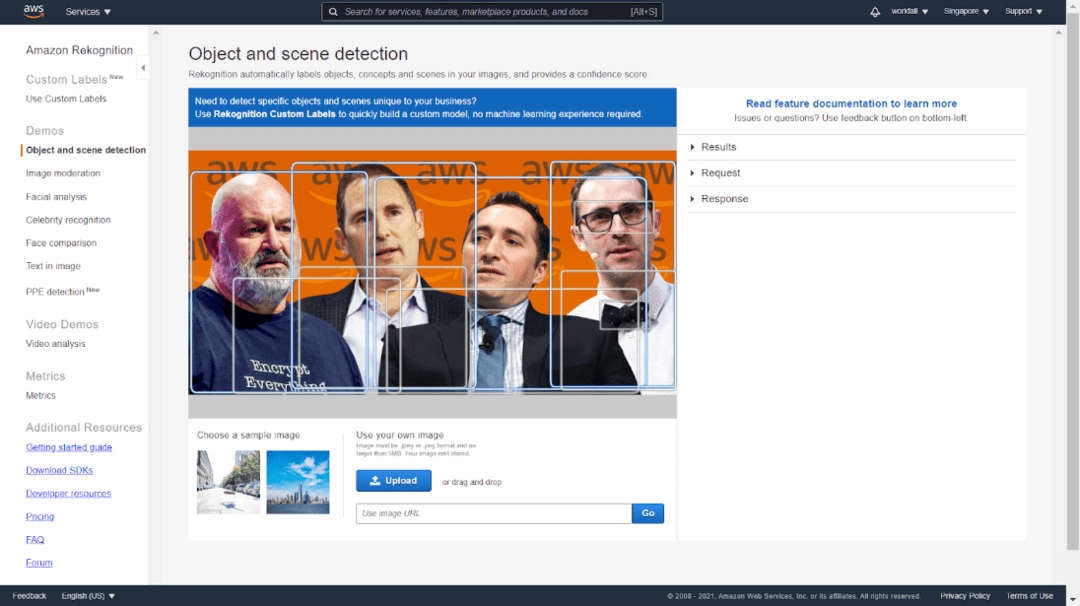
A cloud-based computer vision tool called Amazon Rekognition enables programmers to include picture and video analysis in their apps. The service employs deep learning algorithms to analyze photos and videos and can identify objects, people, and text. It is helpful for security, public safety, and retail applications because it also offers facial analysis and recognition.
Amazon Rekognition is scalable, easy to use, and can be integrated into existing applications through APIs. Its high accuracy and performance make it one of the best face recognition software services on the market.
- Object and scene detection
- Facial analysis
- Text in image detection
- Celebrity recognition
- Content moderation
- Custom labels
- Face comparison and search
- Video analysis Integration with other AWS services
- Accurate image and video analysis
- Scalability
- Easy integration
- Custom labels
- Facial analysis
- Limited language support
- Limited offline support
Pricing
- Image and Video Analysis: $0.001 to $0.10 per image or video minute
- Custom Labels: $0.10 to $3.00 per hour of training time
- Face Comparison and Recognition: $0.001 to $0.10 per request
- Text in Image Detection: $0.0025 to $0.75 per image
2. Betaface

A set of tools for facial analysis, verification, and identification are available from Betaface, a provider of facial recognition software and APIs. To identify and analyze different facial traits, including gender, age, ethnicity, emotions, and facial landmarks, it makes use of sophisticated computer vision algorithms.
Applications for the program include customer involvement, marketing and advertising, and security and surveillance. Betaface's API is simple to connect with various computer languages and offers high facial recognition performance and accuracy.
- Face detection
- Face recognition
- Facial attributes analysis
- Ethnicity detection
- Image and video processing
- Integration
- Customizable
- Advanced facial recognition capabilities
- High accuracy
- Customizable
- Integration
- Security features
- Cost is higher
- Privacy concerns
Pricing
- Custom quote.
3. Cognitec

The German company Cognitec offers facial recognition technology and solutions for various markets, including public safety, law enforcement, border control, and security. Their system employs sophisticated algorithms to identify and assess facial characteristics like age, gender, ethnicity, and facial expressions.
Smartphones, access control systems, surveillance cameras, and other hardware and software platforms can all be integrated with Cognitec's facial recognition technology. Several companies worldwide utilize their products for identification and verification because of their high accuracy and dependability.
- Face detection
- Face matching
- Facial analysis
- Live face recognition
- Multi-factor authentication
- Real-time processing
- Privacy protection
- Compliance with regulations
- High accuracy
- Scalability
- Bias and discrimination
- Reliance on high-quality images
- Ethical concerns
Pricing
- Custom quote upon request.
4. Face++
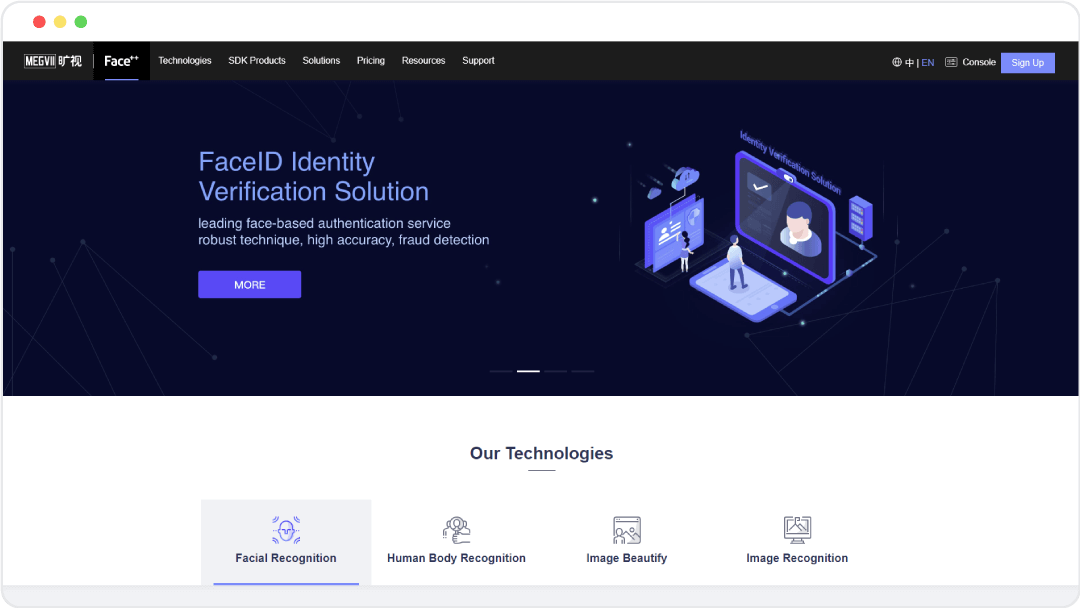
The Face++ facial recognition technology platform was developed by the Chinese startup Megvii. Deep learning algorithms study and identify human faces in images and movies. Facial expression analysis, face detection, face verification, and face identification are just a few of the services offered by Face++.
It is a component of many applications, including social networking sites, mobile phones, and security systems. Yet, concerns about privacy and government spying have also been raised about Face++.
- Face detection
- Face alignment
- Face verification
- Face identification
- Facial expression analysis
- Face attribute analysis
- Face tracking
- 3D face reconstruction
- Accuracy
- Versatility
- Easy to use
- Customizable
- Privacy concerns
- Security risks
- Legal challenges
Pricing
- 1 Day: $10
- Monthly: $1000
5. BioID
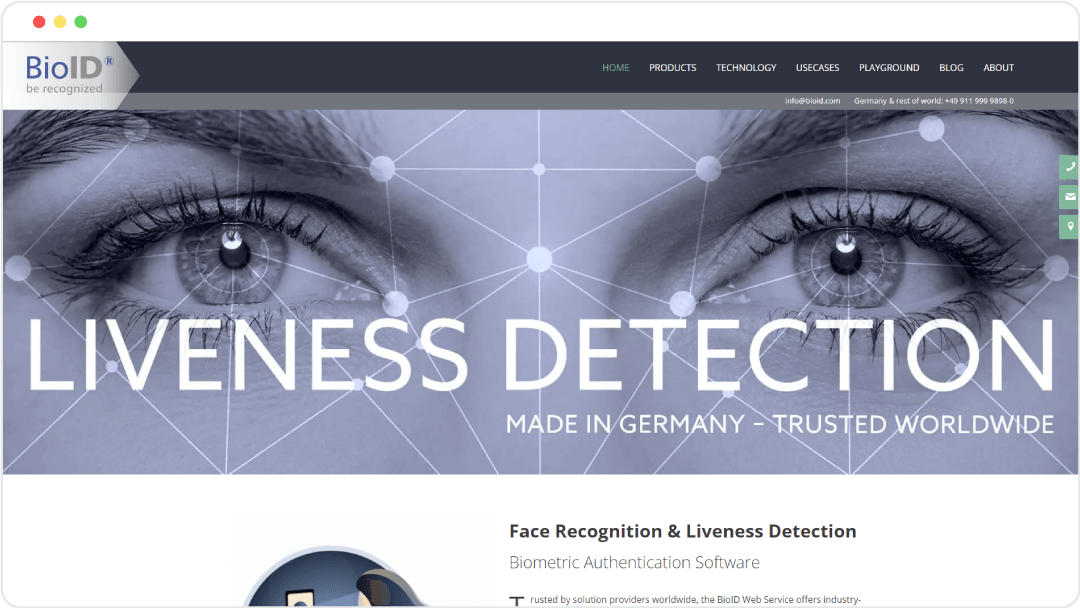
BioID, a biometric authentication method, verifies a user's identity using face recognition. It is a cloud-based option that may be integrated into various software and hardware, such as web services, mobile apps, and access control systems.
BioID offers a high level of security due to employing multiple identity verification techniques, including facial recognition, liveness detection, and anti-spoofing measures. Moreover, SDKs are made available for various platforms and programming languages, making the technology user-friendly and easy to incorporate.
BioID is used in many industries, such as finance, healthcare, and government, to help stop fraud and identity theft.
- Facial recognition
- Liveness detection
- Anti-spoofing measures
- Identity verification
- Mask authentication
- Accurate identification
- Flexibility
- Convenience
- Security
- Privacy
- Dependence on image quality
- Possible errors
- Ethical concerns
- Limited use cases
Pricing
- On request.
Who Are The Users of Face Recognition Software?
Face recognition technology has become a popular solution for many organizations and businesses because it can improve security, streamline processes, and enhance customer experience. In this response, we will describe each "User of Face Recognition Software" point in detail
-
Retailers
Retailers use face recognition technology to identify loyal customers and track their buying habits. This information may make targeted marketing campaigns and personalized shopping experiences possible. Retailers can also use the technology to detect shoplifters and prevent fraudulent activities.
-
Hospitality Sector
Face recognition technology is used in the hospitality industry to handle access control, provide a smooth check-in procedure for customers, and provide personalized services. Also, the technology can increase security, spot and stop unwanted entries, and improve the entire guest experience.
-
ATMs
ATMs use face recognition technology to authenticate users and prevent unauthorized access. This enhances security and prevents fraud, making it easier for users to access their funds.
-
Educational Institutions
Educational institutions use face recognition technology to manage access control, automate attendance tracking, and enhance security. This technology also helps identify and track campus visitors, staff, and students, increasing safety and security.
-
Government Agencies
Government agencies use face recognition technology to prevent identity fraud, track criminal activities, and improve public safety. The technology can also be used to identify missing persons and track suspects.
-
Security Agencies
Security agencies use face recognition technology to monitor large crowds and identify suspicious activities. This technology helps prevent crimes, track suspects, and improve overall security.
-
Law Enforcement Agencies
Law enforcement agencies use face recognition technology to identify suspects and prevent crime. The technology is also used in investigations to match suspects with existing criminal records and identify potential threats. It helps in enhancing public safety and reducing crime rates.
Conclusion
Face recognition software has become widely utilized across numerous industries and organizations. It has many advantages, including increased security, streamlined operations, improved customer service, and reduce fraudulent activity.
Technology has come a long way in recent years and continues to evolve with artificial intelligence and machine learning advancements. But it's critical to address ethical issues and ensure that technology is applied responsibly and with the utmost respect for data security and privacy. Face recognition software has a lot of potential to benefit organizations and society when used properly.
FAQs
The accuracy of face recognition software can vary depending on several factors such as lighting conditions, angle and pose of the face, image resolution, and quality of the algorithm used. Normally, modern face recognition software is highly accurate when the photographs are of excellent quality and in suitable conditions.
Though no face recognition program is 100% accurate, there have been false positives and negatives, so it's important to remember that. Also, there have been worries about the possibility of bias and inaccuracy in facial verification software technology, particularly in cases involving persons of color and women. Because of this, it's critical to accurately assess and test facial recognition software and ensure it's utilized responsibly while taking privacy and ethical considerations.
The safety of face recognition software largely depends on how it is implemented and used. Face recognition software can provide various benefits, such as enhancing security, streamlining processes, and improving customer experiences when used ethically and responsibly.
However, there are concerns about potential misuse and abuse of the facial verification software technology, such as unauthorized surveillance, profiling, and violation of privacy. There have also been reports of errors and biases in face recognition technology, particularly when accurately identifying people of color and women.
It is important to note that the safety of face recognition software is not just limited to technical accuracy but also involves ethical and legal considerations. It is crucial to ensure that the face matching software is used in compliance with applicable laws and regulations and with consideration for human rights and privacy. As such, the safety of face recognition software can be improved through transparency, accountability, and ethical considerations in its development, deployment, and use.
A confidence score in facial recognition software is a value assigned to each face recognition match, indicating the level of confidence the software has in the match. The confidence score is usually a percentage or a numeric value, with higher values indicating greater confidence in the match.
The confidence score compares features extracted from the input image or video to those stored in the face recognition database. The algorithm used by the best facial recognition software analyzes the similarity of facial features, such as the distance between the eyes, nose, and mouth. It assigns a confidence score based on the level of similarity.
The confidence score determines the threshold for accepting or rejecting a match in practical applications. A higher confidence score means a higher probability that the match is accurate, while a lower score means that the match is less certain. It is important to set an appropriate threshold for the confidence score to balance accuracy and false positives or negatives, depending on the use case.
Yes, image quality can significantly impact the results of facial recognition software. Compared to a low-quality image with low resolution, a high-quality image with adequate lighting, sharpness, and contrast can deliver more accurate and dependable findings.
In general, facial recognition software works by analyzing and comparing specific facial features such as the distance between the eyes, nose, and mouth and the shape of the jawline. If the image is pixelated or fuzzy, the software might find it challenging to precisely recognize these characteristics and develop a match. Similarly, poor lighting conditions, such as low light or harsh shadows, may affect the accuracy of the facial comparison software's algorithm.
Furthermore, the quality of the image can also affect the facial recognition software's ability to differentiate between individuals who have similar features or are related. This is especially essential when the software is utilized for law enforcement reasons or in critical security applications.
To increase the accuracy and dependability of the results, it is crucial to make sure that the images used by facial recognition software are of high quality, with good lighting and resolution.
Yes, image quality can significantly impact the results of facial recognition software. Compared to a low-quality image with low resolution, a high-quality image with adequate lighting, sharpness, and contrast can deliver more accurate and dependable findings.
In general, facial recognition software works by analyzing and comparing specific facial features such as the distance between the eyes, nose, and mouth and the shape of the jawline. If the image is pixelated or fuzzy, it might be challenging for the software to precisely recognize these characteristics and develop a match. Similarly, poor lighting conditions, such as low light or harsh shadows, may affect the accuracy of the facial recognition algorithm.
By Countries







